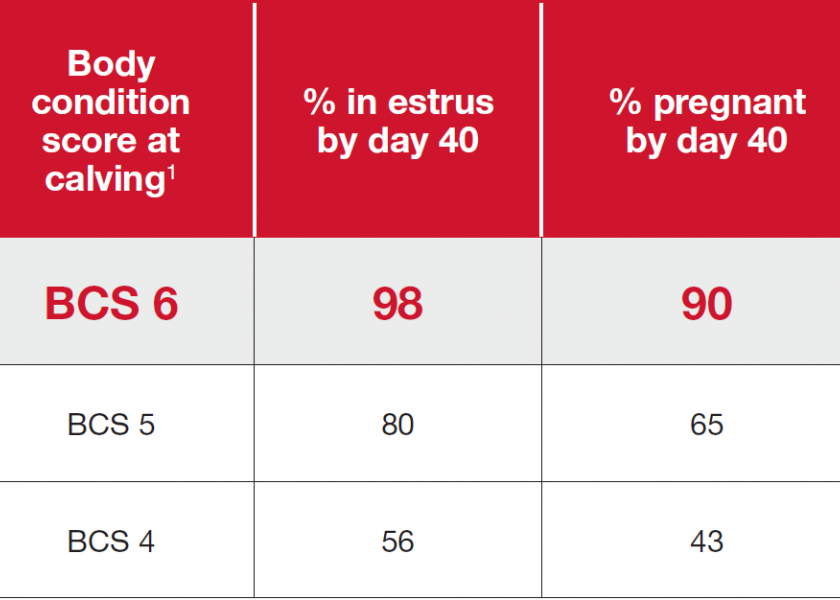Three Tips to Improve Cattle Nutrition

Invest in your herd’s nutrition and your cows will reward you. Talk to Missouri cattleman Dennis Alt about his herd’s nutrition and that’s what he’ll tell you.
Alt hasn’t always had a focus on nutrition, though. He manages a cow/calf operation with 100 commercial cows, 125 Limousin/Lim-Flex cows and 60 Red Angus cows. He also markets 70-80 bulls per year. In 2012, he revamped his herd’s nutrition program and has seen great results.
“If your nutrition program doesn’t match cattle needs, you could be leaving performance, and ultimately profit, on the table,” said Elizabeth Backes, Ph.D., and cattle nutritionist with Purina Animal Nutrition. “Frequently forages fall short in providing all of the nutrition cattle need to thrive.”
The single biggest reward from Alt’s focus on nutrition: bigger, better calves.
Backes and Alt share insights to help improve your cattle nutrition program:
1. Investing now pays dividends later
The foundation of any cattle nutrition program is mineral. Providing cattle with a high-quality mineral helps maintain a consistent body condition score (BCS) year-round for greater breeding success.
There’s a strong correlation between breeding results and profitability. “More cows bred translates to more calves born, which means more calves weaned and more pounds to sell,” Backes said. “If you can get more calves on the ground, that’s more potential dollars in your pocket.”
Alt adds, commodity feeds seem a lot cheaper, but when you look at total dollars, the high-quality nutrition is more economical and can pay for itself.
“Last year, we developed 20-30 replacement heifers on Accuration® Supplements. On those heifers, we invested about 75 percent of the cost of feeding commodities,” Alt said. “But what surprised me the most is the value for the rate of gains and the health of the cattle.”
2. Focus on key times
At any given time, a productive beef cow is eating for two or three. She is likely bred, carrying a fetus and may still be nursing a calf. The nutrients the calf receives in utero and at side can impact its future reproductive abilities.
“Collecting cow body condition scores often and during critical times, like calving and rebreeding, can help you determine your herd’s nutritional needs in real time,” Backes said. “Adjusting nutrition in real-time to maintain body condition scores (BCS) can help protect the future reproductive potential of your herd.”
Acting on BCS data is vital because playing catch-up can be costly. For example, cows at a BCS of 3 at calving need to gain upwards of 3 pounds per head per day to be at a BCS of 5 before breeding. In addition, she’s likely nursing a calf, which makes it even more difficult and expensive to do in most real-world conditions.
3. Tighten the windows
A good BCS (6) can decrease the postpartum interval, so cows get bred earlier in the breeding season. A single-point change in BCS impacts return to estrus and confirmed pregnancies.[1]
For a 100-cow herd, a one-point drop of BCS 6 to 5 at breeding could equate to roughly 25 calves born later or not born at all because nutrition slipped post-calving. Calves born later result in less weaning weight.
Alt knows from experience that breeding success is closely tied to when a cow gets bred back.
“Forget about open cows, just getting cows bred earlier in the breeding season means more dollars in your pocket,” Alt shared. “The 500 pounders sell with the 700 pounders. That's 200 pounds of weight times the market price per pound, so better breeding results are definitely better for the bottom line.”
The biggest take-home message?
“Use a high-quality nutrition program you don't have to think much about. This way you can concentrate on the other areas of your business,” Alt said.
Backes added, “Set your cows up for success with a good, year-round nutrition program. Never let your cows have a bad day.”
For more tips on cattle nutrition and breeding, visit purinamills.com/breeding.







